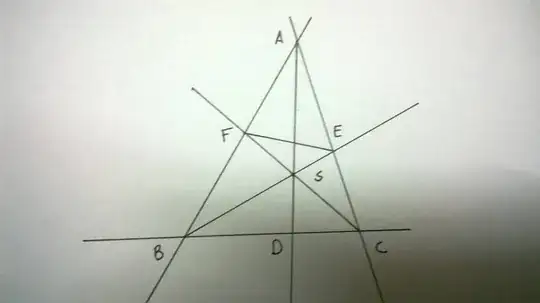 $S$ tend towards Point $D$ along $AD$">
$S$ tend towards Point $D$ along $AD$">
In the figure suppose the point $S$ tends to $D$ along Line $AD$ . According to Ceva $$ \frac{AF}{FB} \cdot\frac{BD}{DC}\cdot\frac{CE}{EA} =1$$ as we see if S tends to D $ \frac{AF}{FB} $ increases and $ \frac{CE}{EA} $ decreases And Ceva's theorem is valid and in the limiting case it seems to be valid, but is it valid when the point lies on the triangle, and what does the formula look like when the point is on the triangle?